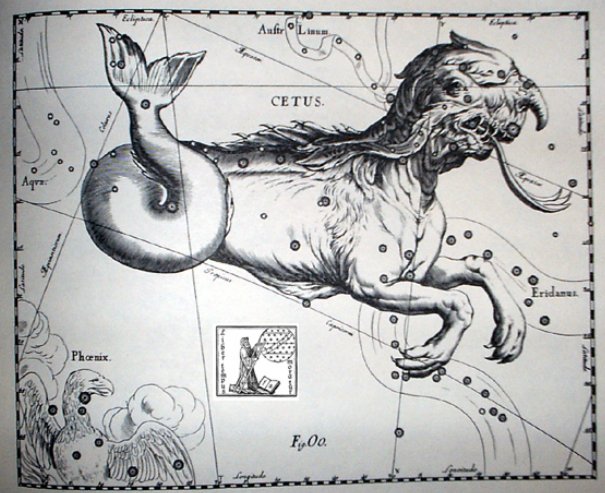5. Remarkably my structure with Atlas at the beginning can easily be formed into a beautiful order:
Presumably the table is only an outline of a more sophisticated structure. For instance are there 100 days from Procyon to Arctururs. 12 * 29½ = 354 suggests there could be an extra day among those 355 from Atlas up to and including Menkar, the star at the nose (i.e. terminal point) of Cetus. Hevelius has time running towards the right:
In 4700 BC the foot of Castor was at spring equinox, where time would be 'broken', where one year was terminated and the next would begin. If each twin represented half a year, then Castor had to die every spring. Ab1-37 (where 1-37 could allude to Sheratan 1, day 137 in the Gregorian calendar) probably illustrates how a birth comes after the old period has gone away. The ihe tau sign at left in the glyph is broken (the outline has a gap at left), which should mean life has returned. This is my summary page for ihe tau in my preliminary glyph type dictionary:
| ||||||||||||||||||||||||||||

